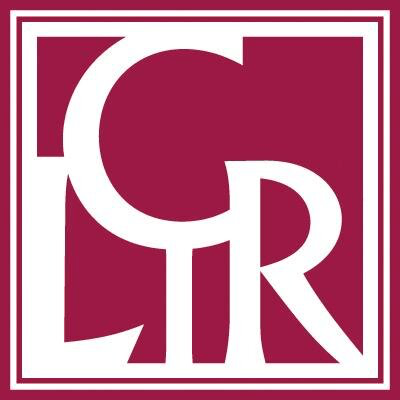One of the goals of the DLF Collection Practices Initiative was to identify “best practices.” This goal began to seem overly ambitious as research for this report progressed and as more and more complexities and specialized local circumstances surfaced. Therefore, it seems more appropriate in closing to identify a few practices that appear to be effective or that seem to be promising. On the basis of this and future work, more definitive “best practices” may perhaps be defined.
Before doing so, it is important to recall that the introduction to this report noted that commercially available resources must be affordable for libraries to be able to build and sustain significant collections of them. That comment served as the rationale for exploring two strategies for controlling costs-consortial purchasing and scholarly communication initiatives. The recent literature concerning these strategies indicates that there is much to be said for each. Because of that, and because it is difficult to assess their current impact or to predict how either might help control prices for electronic resources over the long term, neither is being put forward here as an “effective practice.” Affordability remains a necessary precondition for sustainability, however.
Leaving such strategies and related controversies aside, it was still difficult to choose objectively from among the practices discussed in the other sections of this report. Nevertheless, a selection was made and is presented as Table 2. Another researcher could easily have chosen differently, and that element of subjectivity should be kept in mind when reviewing it. Table 2 follows the organization of the text and the list of practices and links in Appendix A; for this reason, only a few brief comments are given. Readers may refer to the appropriate text and appendix sections for more information.
The discussion of selection policies and strategic plans emphasized that it is important for libraries to articulate what they wish to achieve through the acquisition of commercial electronic resources and to identify the values that should inform their decision making. Creating strategic plans for e-resource collection development-especially plans that incorporate concrete steps and benchmarks-seems to be another worthwhile activity. For large libraries, the purchase and presentation of electronic resources is a complex process involving large numbers of staff. Coordination of decision making and other activities is a significant problem. Quite often coordination is achieved partly through one or more e-resource committees, for which there are many interesting organizational models. An important emerging role that appears to be common to many institutions is that of e-resource coordinator. Finally, as resources grow and diversify, it seems inevitable that support responsibility for electronic resources must be distributed across the organization. As a result, a number of institutions have defined a separate but complementary stewardship role that different staff will take on for specific resources or platforms.
The acquisition of electronic resources can be operationally complex, and efforts to make the local process more coherent are important. Steps such as systematizing and documenting workflows, organizing and providing standardized information for vendors, and adopting appropriate forms all hold potential for expedited order handling. Managing the licensing of electronic resources is also one of the bigger challenges that libraries now face. Operationally, effective local licensing practice requires the adoption of clear policies and responsibilities as well as the creation and communication of smooth processes for dealing with them.
Table 2. Idealized Model of Effective Selection and Presentation Practices
| Topic Area | Suggested Practices | |
| 2.2 | Selection Polices and Strategic Plans |
|
| 2.3 | Institutional Finance and Organization |
|
| 2.4 | Internal Procedures for Initial Evaluation and Purchase |
|
| 2.5 | Licensing Issues and Practices |
|
| 2.6 | Web Presentation Strategies |
|
| 2.7 | User Support |
|
| 2.8 | Ongoing Evaluation and Usage Information |
|
| 2.9 | Preservation and Archiving |
|
| 2.10 | Toward Integrated Systems for Managing Electronic Resources |
|
Ideas about how best to present licensed resources to users continue to emerge rapidly. Recent initiatives aimed at making the contents of aggregator databases more visible to staff and users and at linking indexing databases to licensed e-journal collections enable libraries to derive more benefit from those resources. Establishing open standards for both seems important, for to do otherwise may mean supporting multiple vendor-specific systems. Efforts to better identify and meet the needs and interests of particular user groups, as well as to enable users to personalize their own views of relevant resources based on their own interests and usage patterns, also stand out.
Extensive reliance on vendors for access to e-resources, and the attendant proliferation of interfaces and possible sources of problems, is likely to necessitate a creative look at how the support function can best be organized. Establishing clear problem-triage paths is an important step. Reliance on vendor performance has also been problematic for libraries that rely on vendors exclusively for usage information. Ongoing efforts to establish standards for such data and to urge vendor compliance are quite important, and individual libraries should support those efforts in their contacts with vendors. The systematic, ongoing presentation of such data to staff and its review under organized, ongoing programs when resources are up for renewal also seem to qualify as effective practice.
Although clear solutions are not yet on the horizon, it is extremely encouraging that a number of organizations and libraries are taking a keen interest in archiving and preserving electronic resources.
Finally, it is clear from the time and effort invested by many libraries creating local systems for managing electronic resources that existing library management systems and software lack important features and functionality. Although developing local systems probably contributes to effective local practice, coordinated efforts to define needs and establish standards may prove to be of broad benefit.

